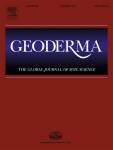Drained organic soils are a significant source of greenhouse gas (GHG) emissions to the atmosphere. Rewetting these soils may reduce GHG emissions and could also create suitable conditions for return of the carbon (C) sink function characteristic of undrained organic soils. In this article we expand on the work relating to rewetted organic soils that was carried out for the 2014 Intergovernmental Panel on Climate Change (IPCC) Wetlands Supplement. We describe the methods and scientific approach used to derive the Tier 1 emission factors (the rate of emission per unit of activity) for the full suite of GHG and waterborne C fluxes associated with rewetting of organic soils. We recorded a total of 352 GHG and waterborne annual flux data points from an extensive literature search and these were disaggregated by flux type (i.e. CO2, CH4, N2O and DOC), climate zone and nutrient status. Our results showed fundamental differences between the GHG dynamics of drained and rewetted organic soils and, based on the 100 year global warming potential of each gas, indicated that rewetting of drained organic soils leads to: net annual removals of CO2 in the majority of organic soil classes; an increase in annual CH4 emissions; a decrease in N2O and DOC losses; and a lowering of net GHG emissions. Data published since the Wetlands Supplement (n = 58) generally support our derivations. Significant data gaps exist, particularly with regard to tropical organic soils, DOC and N2O. We propose that the uncertainty associated with our derivations could be significantly reduced by the development of country specific emission factors that could in turn be disaggregated by factors such as vegetation composition, water table level, time since rewetting and previous land use history.
Download:
DOI:
https://doi.org/10.19189/MaP.2016.OMB.222
Altmetric score:
Dimensions Citation Count:

























